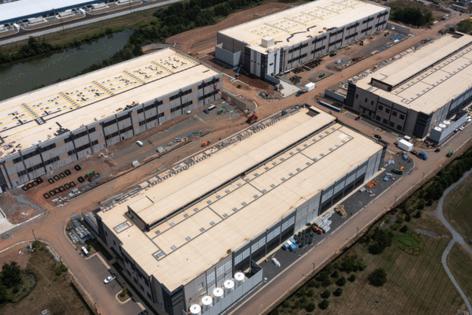AI's $5 trillion data-center boom will dip into every debt market, JPMorgan says
Published in Home and Consumer News
The furious push by AI hyperscalers to build out data centers will need about $1.5 trillion of investment-grade bonds over the next five years and extensive funding from every other corner of the market, according to an analysis by JPMorgan Chase & Co.
“The question is not ‘which market will finance the AI-boom?’ Rather, the question is ‘how will financings be structured to access every capital market?’ ” according to strategists led by Tarek Hamid.
Leveraged finance is primed to provide around $150 billion over the next half decade, they said. Even with funding from the investment-grade and high-yield bond markets, as well as up to $40 billion per year in data-center securitizations, it will still be insufficient to meet demand, the strategists added. Private credit and governments could help cover a remaining $1.4 trillion funding gap, the report estimates.
The bank calculates an at least $5 trillion tab that could climb as high as $7 trillion, singlehandedly driving a reacceleration in growth in the bond and syndicated loan markets, the strategists wrote in a report Monday.
The analysts project $300 billion in high-grade bonds going toward AI data centers next year. That could account for nearly one fifth of total issuance in that market, which a report from Barclays Plc estimates will grow to $1.6 trillion.
Data center demand — which the analysts said will be limited only by physical constraints like computing resources, real estate, and energy — has gone parabolic in recent months, defying some market-watchers’ fears of a bubble. A $30 billion bond sale by Meta Platforms Inc. last month set a record for the largest order book in the history of the high-grade bond market, and investors were ready to fork over another $18 billion to Oracle Corp. last week to fund a data center campus.
Despite the eye-popping sums the analysts estimated will be necessary to fund the next half-decade of expansion, they warned the path forward will not simply be “up and to the right.” Their biggest fear would be a repeat of the bubble that formed around telecom and fiber-optic networks in the late 1990s and early 2000s, when overcapacity led to a wave of defaults and a collapse in many sky-high valuations.
Warning signs that investor exuberance about data centers may be approaching irrational levels have been flashing brighter in recent weeks. More than half of data industry executives are worried about future industry distress in a recent poll, and others on Wall Street have expressed concern about the complex private debt instruments hyperscalers are using to keep AI funding off their balance sheets.
“Even if everything works, there will be spectacular winners, and probably some equally spectacular losers as well given the amount of capital involved and winner takes all nature of portions of the AI ecosystem,” the analysts said.
According to the bank’s strategists, the largest portion of the funding in the next five years is expected to come from the hyperscalers themselves, which are currently diverting $500 billion of their $700 billion in annual net operating income toward capital expenditures.
©2025 Bloomberg L.P. Visit bloomberg.com. Distributed by Tribune Content Agency, LLC.








Comments